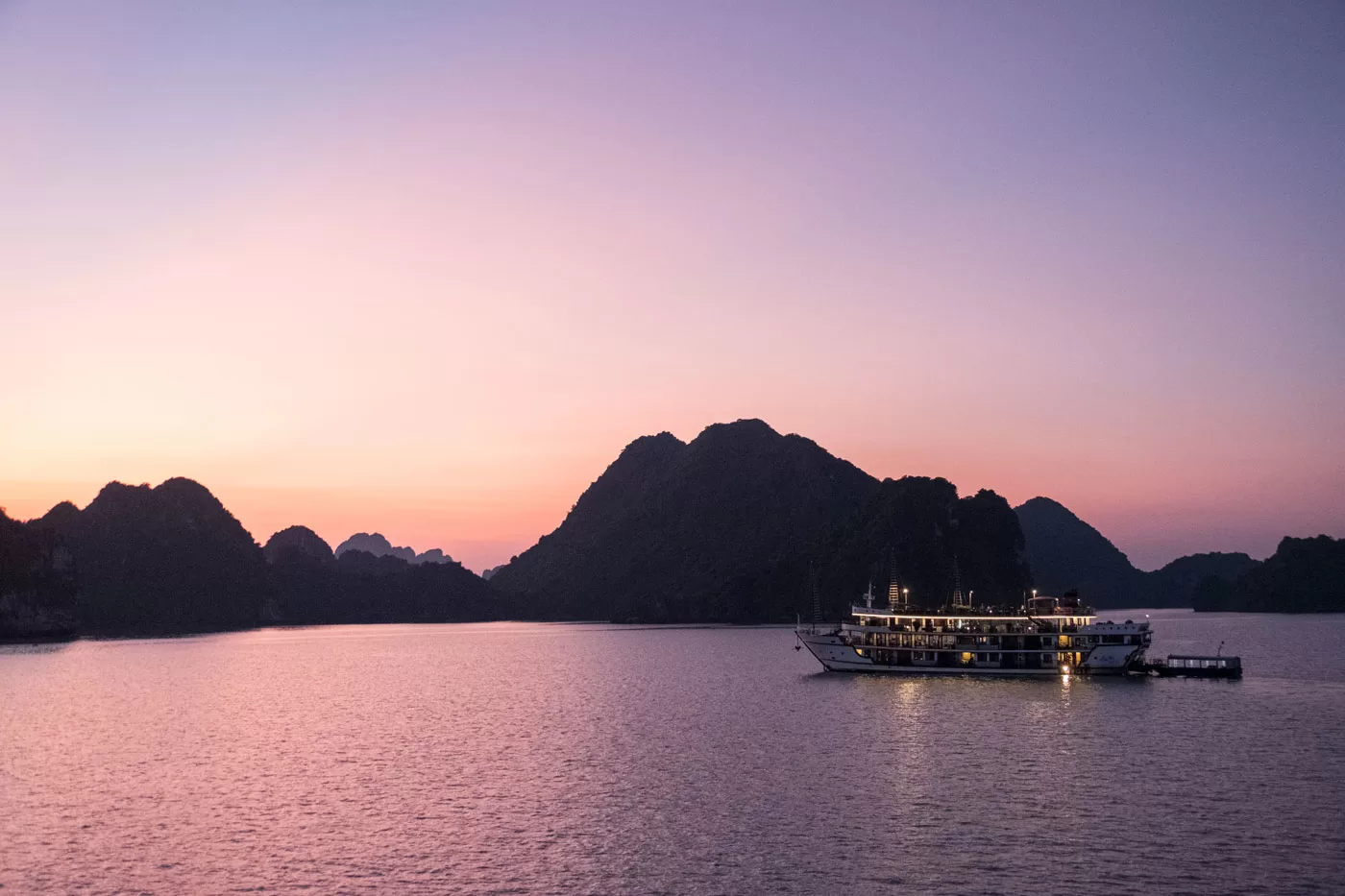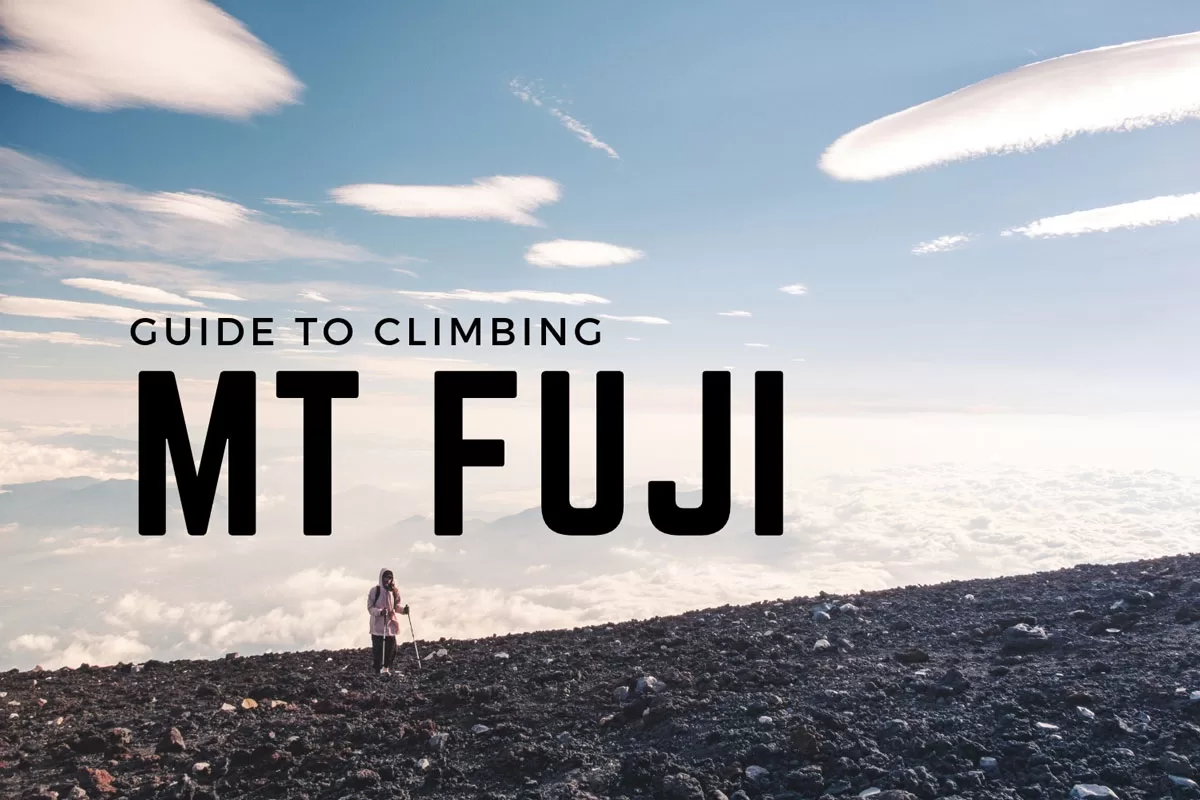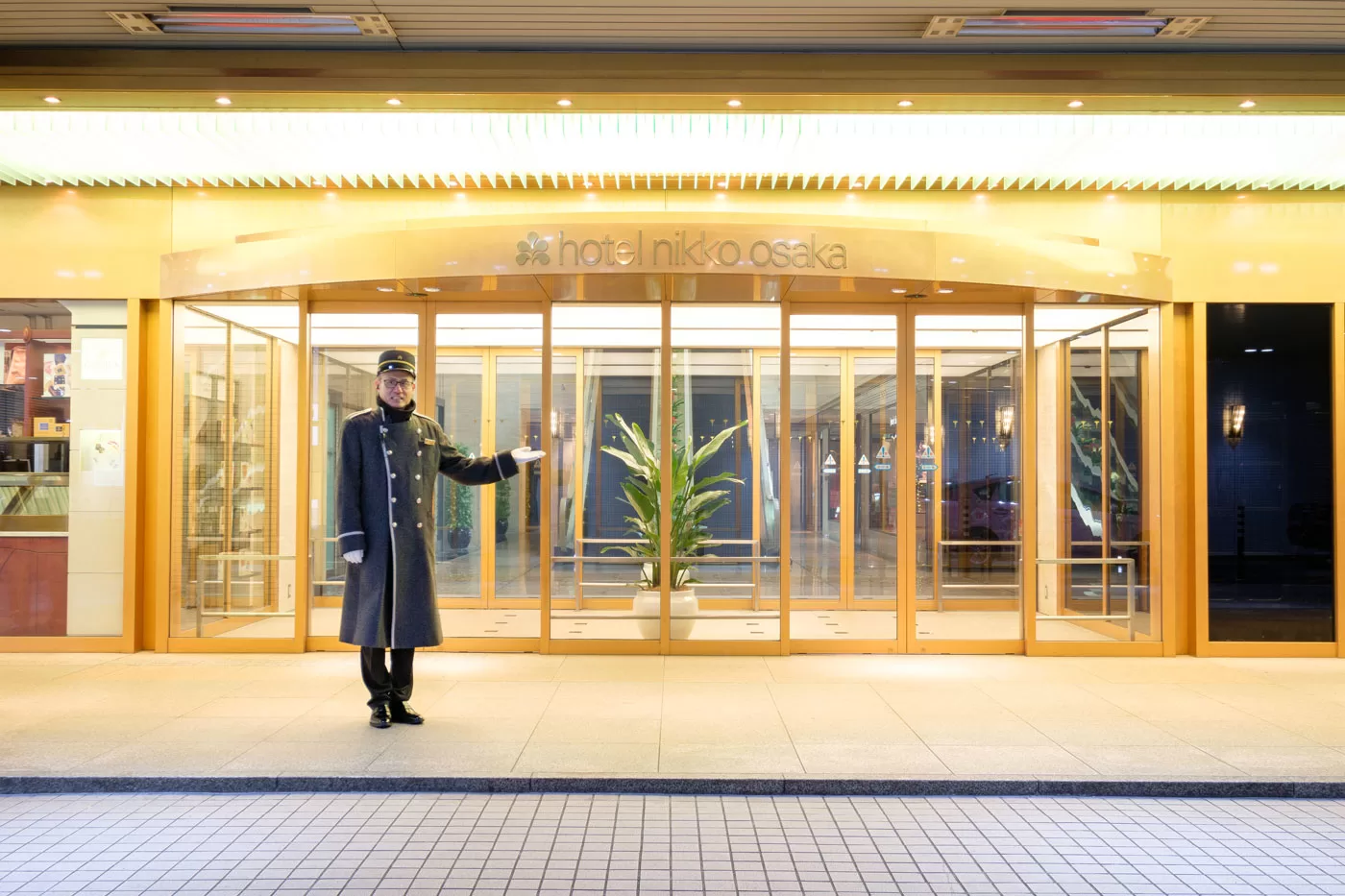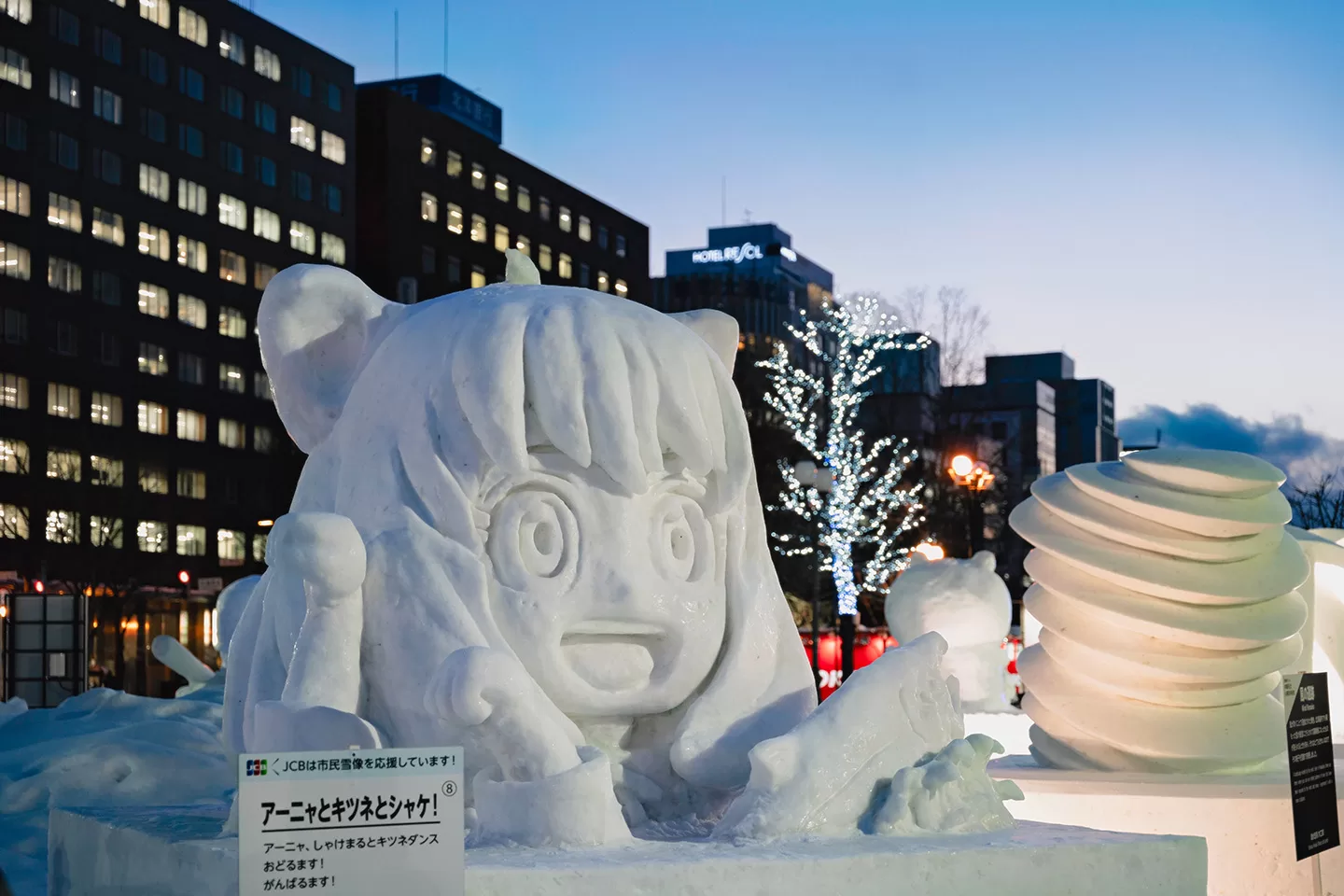
The Sapporo Snow Festival returns for its 74th edition in 2024. From meticulously crafted snow sculptures to family-friendly activities, this festival in Hokkaido’s capital is quite the spectacle. Let’s dive into everything you need to know about this chilly extravaganza.
What is Sapporo Snow Festival?
Few festivals in Japan have captured as much international attention as Sapporo’s Snow Festival. The previous event in 2023 saw roughly 1.75 million visitors attend, which is even more impressive when you consider it was the first return of the festival after two years of cancellations on top of it being a much-muted affair with some COVID restrictions and measures still in place. 2024 will see a return to the full event.

One of the most alluring things about the Sapporo Snow Festival is its humble origins. This story requires us to rewind to 1950. Sapporo’s central Odori Park was once used as the dumping spot for all the snow shovelled from the streets. Sapporo is one of the snowiest cities in the world and all that snow gets in the way of everyday life, but as they say: one man’s trash is another man’s treasure. A local group of middle and high school students noticed the piled-up snow and saw it as an opportunity. They built six snow sculptures and left the rest of the snow for an organised snowball fight at the park. They also set up a carnival for extra fun and festivities.
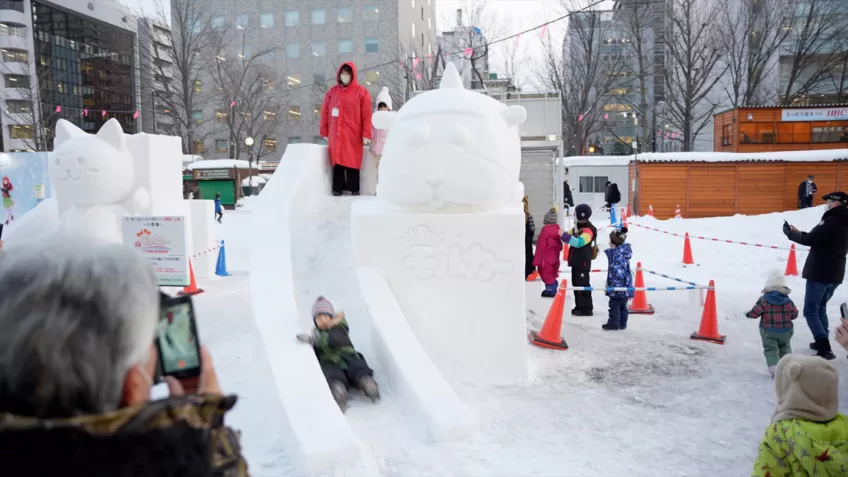
What surprised the students, and everyone in Sapporo, was the turnout of their event. Almost 50,000 people joined in on the event. The people of Sapporo were captivated, instead of just seeing the snow as an everyday nuisance, the event was a wonderful way to celebrate the unique snow conditions of their city. This eventually became an official annual city festival and has gone on to become one of the largest calendar events in the country, ranking as one of the world’s top three major winter festivals. It’s fun knowing it all began because a bunch of students wanted to play in the snow.
When does Sapporo Snow Festival 2024 start?
The festival is held annually in February and lasts for eight days. In 2024 it will take place between February 4-11th.
Where does Sapporo Snow Festival 2024 take place?
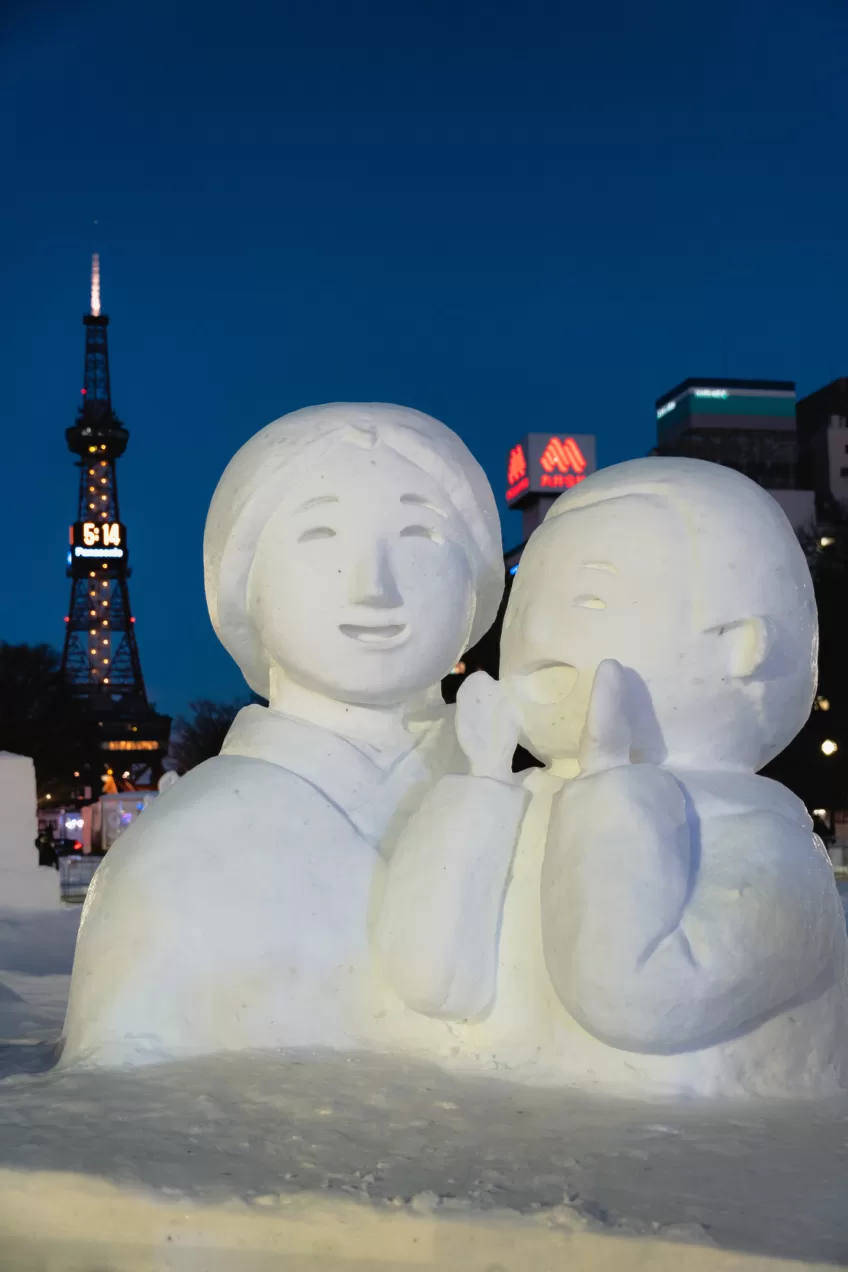
The snow festival’s main venue is in Odori Park (Nishi 1-chome to Nishi 12-chome). It’s here you’ll find most of the snow sculptures, performances and market stalls.
How to get there: Alight at Odori Subway Station. If you enjoy walking but want to stay warm you can use the Chi-Ka-Ho (underground passage) that starts from Sapporo main train station – there are shops and restaurants throughout the passage and exits to the surface.
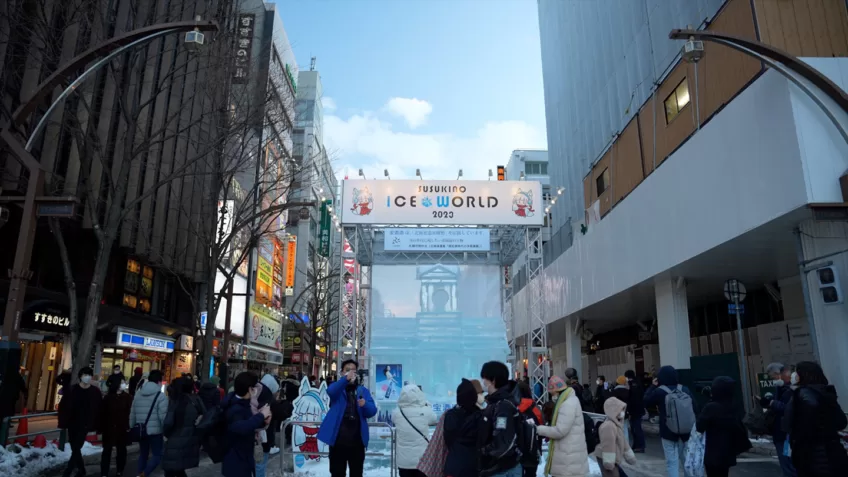
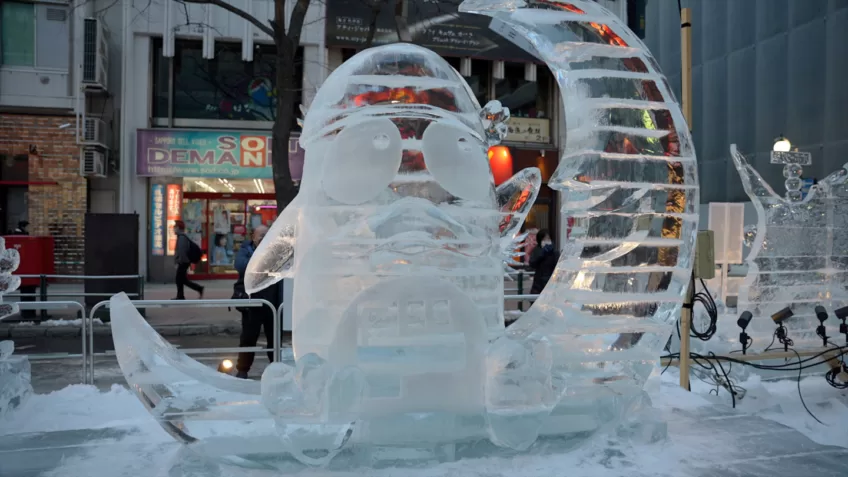
But there are also two other venues for attendees to experience. Down in the entertainment district of Susukino (Ekimae-dori from Minami 4-jo Dori to Minami 7-jo Dori) you’ll find ice sculptures lining the streets.
How to get there: Susukino is also reachable using the same subway line as Odori Park. The Chi-Ka-Ho (underground passage) ends right at the start of Susukino so this is also an option – it takes roughly 10 minutes to walk from Sapporo main station to Susukino using the Chi-Ka-Ho.
The third venue is located at Sapporo’s Community Dome (nicknamed Tsudome). This portion was unfortunately cut from the 2023 event but is making a comeback this year. Previously this venue offered a variety of snow attractions including a long snow slide, snow rafting, snow labyrinth and more.
How to get there: From Sapporo Station take the subway to Sakaemachi Station. From there it’s a 15-minute walk down one street. Alternatively, there is a shuttle bus that operates between Sakaemachi Station and Tsudome (shuttle bus information).
What can I expect at Sapporo Snow Festival 2024?
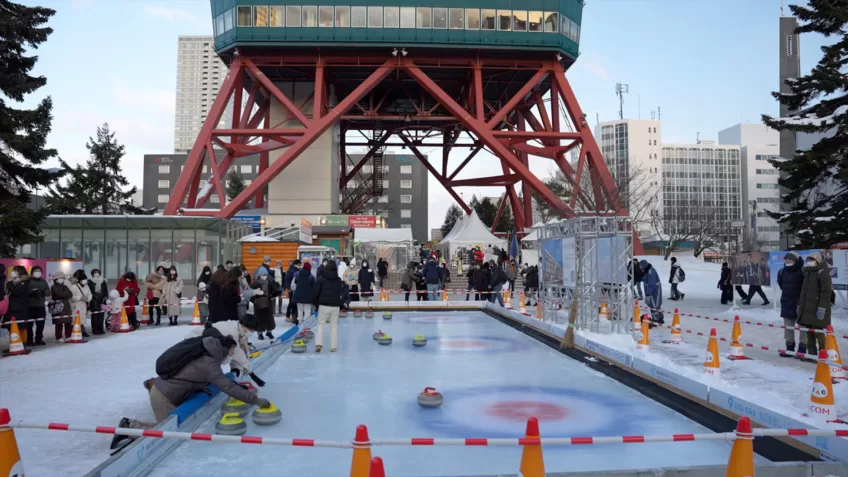
Including the activities and installations listed above this year will also see the return of the International Snow Sculpture Competition – the first in four years. Teams from countries worldwide battle it out with their beautiful snow creations which they build on-site so you’ll get the chance to see them sculpt up close. The previous winners were from Thailand so it’s not just the snow countries which dominate the competition.
After watching the experts, you might be inspired to try your hand at snow sculpting yourself. There’s a special event taking place at Sapporo Hitsujigaoka Observation Hill. There you’ll find expert instructors who will guide visitors in the art of creating snow sculptures.
How to get there: Take the Chuo bus from Fukuzumi Bus Terminal to Hitsujioka Tembodai bus stop (for bus timetable and additional information visit the Sapporo Hitsujigaoka Observation Hill website)
How cold does it get, what should I wear?
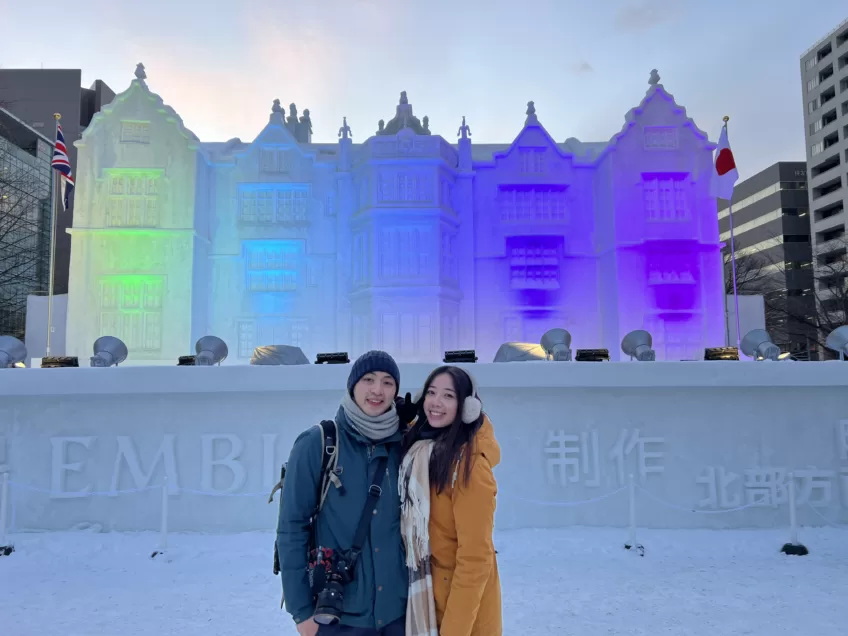
Hokkaido is the northernmost island of Japan and bears the coldest temperatures in the country. Average temperatures in February drop to – 3.1℃(26.4°F) with maximum and minimum temperatures of 0.1℃(31.8°F) and – 6.6℃(20.1°F). Typically February expects 147mm of snow.
The Sapporo Snow Festival is entirely outdoors so you’ll want to dress appropriately. We wore long upper and lower thermals as base layers with standard long trousers and a thick jumper. Most importantly we both wore down jackets and a waterproof overcoat on top. Last but not least, scarves, gloves and a beanie hat.
You can also expect icy paths and roads around Sapporo during this time. We highly recommend picking up some crampons you can attach to your shoes as these make walking so much easier – you can find these in kombinis and other shops in Sapporo and should cost no more than 2,000 yen.
Food to try in Sapporo?
Food is delicious all over Japan but up in Hokkaido they’re well known for their high-quality fresh vegetables, dairy and seafood. Below are some foods to try and places we recommend to try them.
Miso Ramen

Miso ramen uses miso in its soup base for a rich, punchy flavour which has made it a fan-favourite and is regularly found in ramen spots across Japan. What many might not know is that the birth of Miso Ramen is credited to Aji no Sanpei in Sapporo. It is rumoured the invention came about after a drunk customer requested noodles in his miso soup.
Where to try: Aji no Sanpei is still operating today and is our top choice for Miso Ramen in the whole of Japan. Head inside the Daimarufujii Central Building (which looks like a stationary shop from the ground floor) and head to the 4th floor to find the ramen spot. Costs around 1,000 yen.
Genghis Khan
Named after the infamous Mongolian ruler, the Japanese Genghis Khan is grilled mutton or lamb with vegetables cooked on a special round skillet. The name of the dish is rumoured to have come about because the residents of Sapporo once thought Mongolian soldiers ate a lot of lamb so they named the dish after the most famous Mongolian soldier.
Where to try: Nearby Susukino area there are lots of restaurants that specialise in Genghis Khan. Two popular choices include Genghis Khan Juttetsu with its special sauce and Extreme Salt Cured Genghis Khan who ages their lamb with salt for more tenderness. Costs around 4,000 yen.
Soup Curry

Warmly regarded as Sapporo’s soul food, soup curry is another delicious dish birthed from the city. The lighter consistency is more soup-like than curry but still packs all the flavours one would expect from a curry dish. Typically accompanying the curry is an assortment of chunky vegetables and your choice of meat. It’s our go-to dish whenever we’re in town.
Where to try: Our favourite two restaurants for soup curry are Soup Curry GARAKU and Soup Curry King. Soup Curry GARAKU in particular always has long queue time so try and arrive early. Costs around 2,000 yen.
Hokkaido Dairy
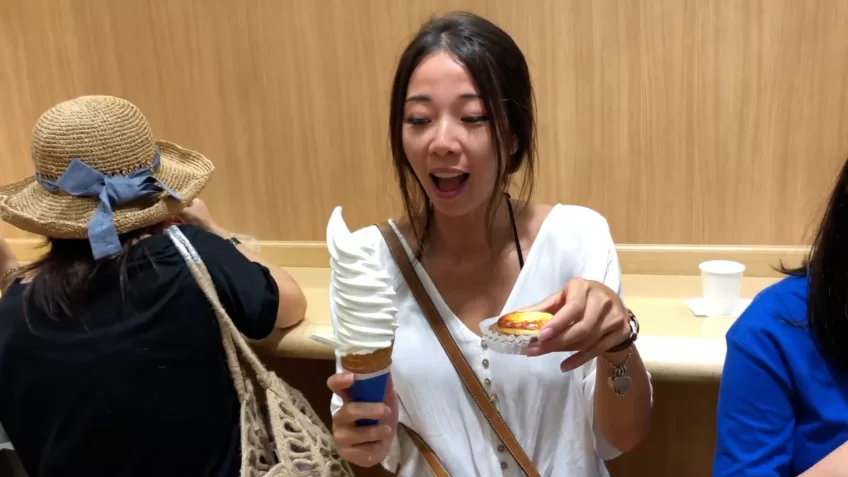
Hokkaido produces over 50% of Japan’s milk and is well-loved for its mild vanilla-like flavour. Drinking milk on its own is the best way to taste the freshness but the milk is also used in hokkaido ice cream and baked cheese tarts.
Where to try: Our visit to Sapporo is never complete without a visit to Kinotoya Bake. Their baked cheese tarts are heavenly – just make sure you grab them when hot from the oven (go at the busiest times). They also offer soft-serve Hokkaido ice cream too! Costs around 250 yen.
What else is there to do in Sapporo?
Sapporo TV Tower
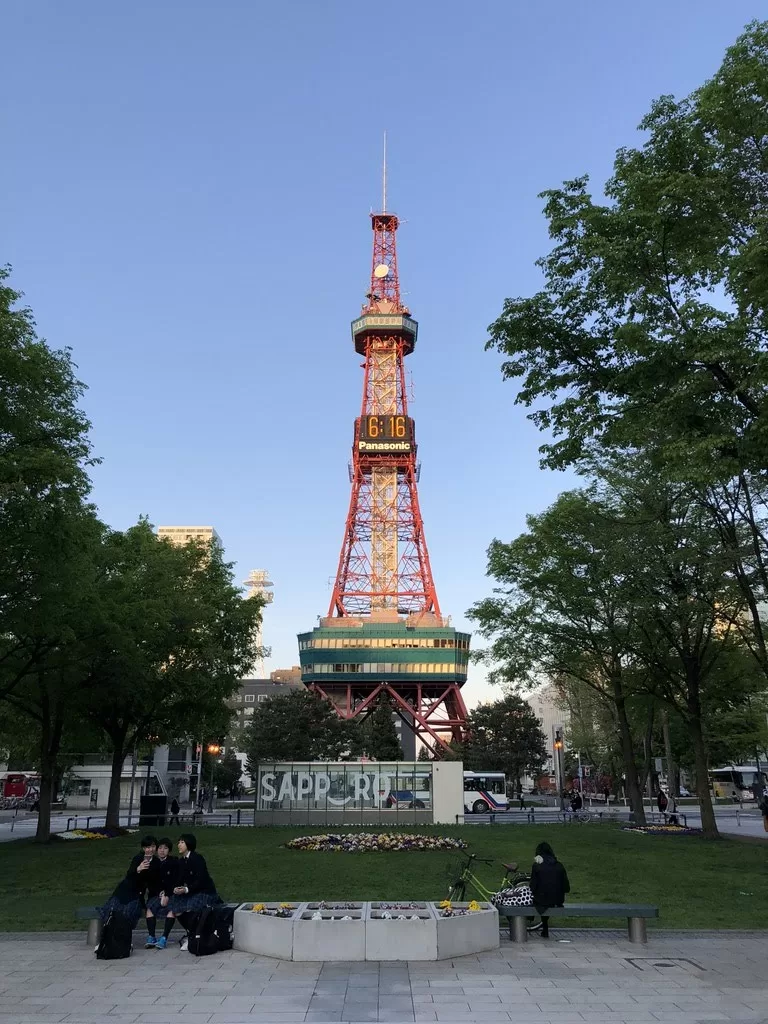
You can easily combine your visit to the TV Tower with your time at the snow festival. The observation deck provides a lovely overview of the festival below.
Sapporo Beer Museum
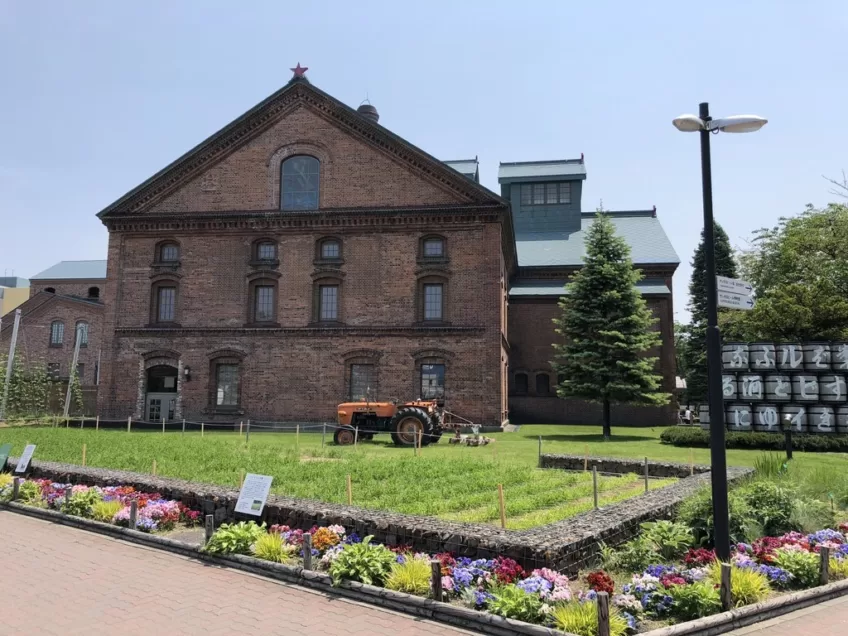
Sapporo beer is one of the major beers produced in Japan. Visitors can take a tour of the brewery to learn how their beer is brewed. A tasting session is included at the end of the tour. Fun fact: Sapporo is the only place in the world that sells Sapporo Classic (the tastiest version).
Mt Moiwa
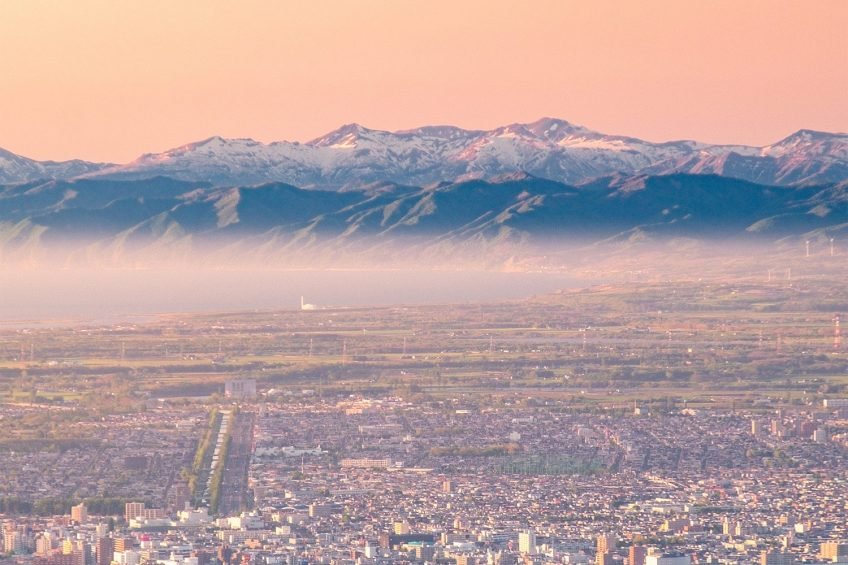
Catch the ropeway up Mt Moiwa for a panoramic view of Sapporo and the surrounding mountains. There’s also a trail that runs up to the observation deck which makes for a fun hike, just be geared up and ready for a winter hike if you decide to go this route.
Hill of the Buddha
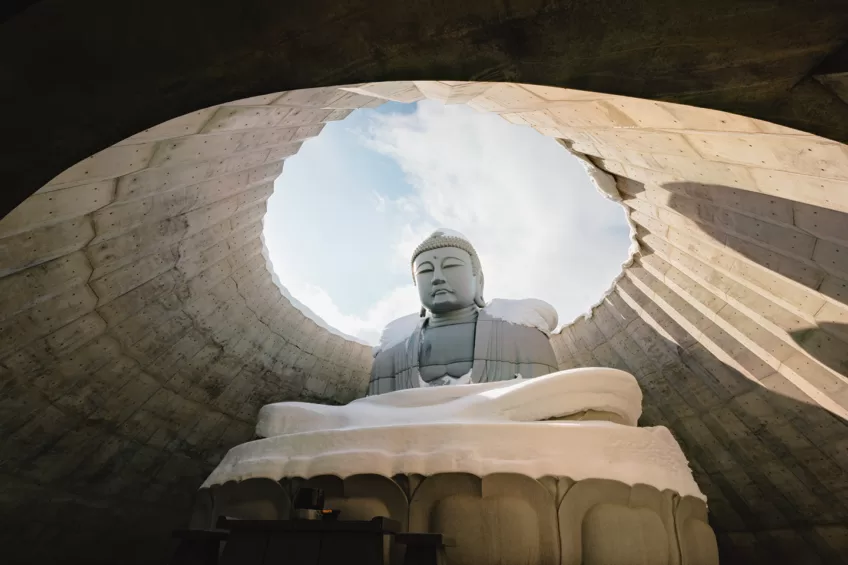
On the outskirts of Sapporo, you can find a Buddha statue sitting inside a hill. This unique temple was designed by Japanese architecture Tadao Ando and is stunning.
Places to visit outside Sapporo?
Hokkaido is so much more than Sapporo. If you have the time, you might want to consider venturing to other parts of the island. Buses and trains will serve most places around Hokkaido.
There’s also the option of renting a car. We love to do this in the warmer months (here’s our guide) but it’s not something we recommend in the winter because of all the snow. It’s dangerous unless you’re very experienced driving in heavy snow.
Otaru

The charming port city of Otaru is a perfect day trip out of Sapporo. The city is famous for its well-preserved canal area and old train line. The old shipping warehouses have now been converted into shops and restaurants making for a romantic setting. Between February 10-17th you can also catch the Otaru Snow Light Path where the streets and canal are adorned with candles from 5-9 pm.
How to get there: From Sapporo Station take the JR Hakodate Line. The journey takes around 1 hour by local train and 30 minutes by rapid.
Niseko
Niseko holds a legendary status amongst skiers and snowboarders thanks to its light, fluffy powder that often reaches chest height. The ski season here runs from late November to early May.
How to get there: Regular buses run from New Chitose Airport (Sapporo’s closest airport) and Niseko.
Asahikawa
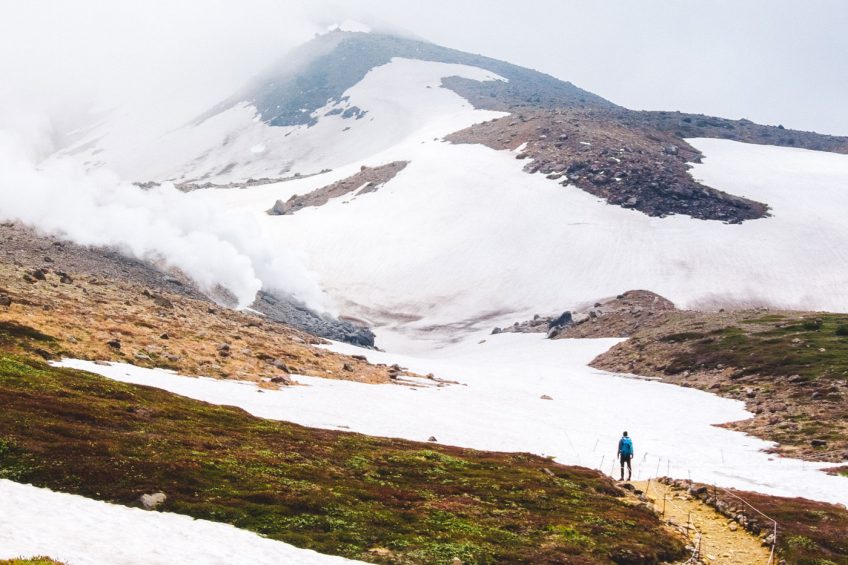
Hokkaido’s second-largest offers its own winter festival (running February 7-12th), mineral-rich onsens, ski slopes and some of the country’s best ramen joints. Venture further out and you can explore the nearby mountain of Asahidake reachable by cable car. Please check weather conditions before doing so as the winter months can be very cold and potentially dangerous at the top.
How to get there: About 1 hour 30-minute ride on the JR Hakodate Line from Sapporo Station. To reach Asahidake you can catch a bus from Asahikawa station but please be aware of bus times as there are only a few that run per day (bus times)
Abashiro
What makes Abashiro special is the drift ice that floats in from Russia and accumulates around the Okhotsk coast. You can board an icebreaker cruise and experience breaking through all that ice.
How to get there: There are direct flights from New Chitose Airport which take under an hour. The alternative is to travel to Asahikawa and catch the Sekihoku line train to Katsuradai Station where it’s a further 6 minutes walk to Abashiro.
Furano and Biei
These two neighbouring towns can be found just below Asahikawa in the centre of Hokkaido. Well known for their serene scenes of farmlands and flowers in the summer, the winter sees these same plains coated in snow and instead turning everything into a winter wonderland. While in Biei be sure to visit the Blue Pond which gained its fame when it became the default desktop wallpaper of Apple Macs for a year.
How to get there: There are very few trains and buses which run into Furano and Biei but to make things more challenging, many of the sights are spaced out and will have limited public transport access. So the best way is to drive but again please be careful if you do.
What if I have more questions?
Hopefully, this post gives you a good starting point in planning your visit to Sapporo Snow Festival. Safe travels, stay warm, and if you have any questions or need more tips, feel free to drop us a comment or message across social media. Happy exploring! ❄️🎉

 Hello, we’re Eric and Sarah – a couple of travel photographers and creatives from the UK.
Hello, we’re Eric and Sarah – a couple of travel photographers and creatives from the UK.